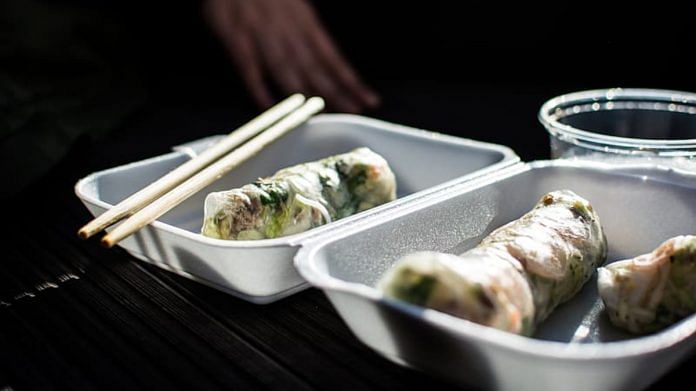Food delivery workers have been praised as heroes for keeping society nourished during the pandemic. But the downside to all that convenience has been a massive pileup of waste.
Take the world’s biggest online meal delivery market, China, where on-demand giant Meituan fulfilled 40 million meal orders on a single day in August. Meal delivery has grown into a $51.5 billion industry in China, according to researchers at New Zealand’s University of Otago. In 2013, the year Meituan got started, Chinese consulting company iiMedia Research estimated the market was just 50.2 billion yuan ($7.63 billion). Meanwhile, say the researchers, the country’s volume of packaging waste grew from 0.2 million metric tons in 2015 to 1.5 million metric tons in 2017.
In the U.S., food and its packaging make up 45% of the material in landfills, according to the Environmental Protection Agency. People in India threw away 235 million food containers in 2018, according to local media reports. In the European Union, researchers from the University of Manchester estimate that more than 2 billion food product packages are discarded each year.
Much of this waste is made of plastic, which is rarely recycled, no matter what trash bin it gets thrown in. But solid waste isn’t the only environmental consequence of food delivery. In China, delivery bikes churned through close to 20,000 batteries in 2016, more than 17,000 of them made with corrosive lead acid, according to a study from the Czech Republic’s Brno University of Technology and Malaysia’s Universiti Teknologi. That same year, say the New Zealand researchers, delivery vehicles and meal containers in China were responsible for releasing 73.9 gigatons of carbon dioxide equivalent into the atmosphere. –Bloomberg
Also read: Chilli chicken, masala fries, bun tikki on menu as Wendy’s plans hundreds of cloud kitchens



